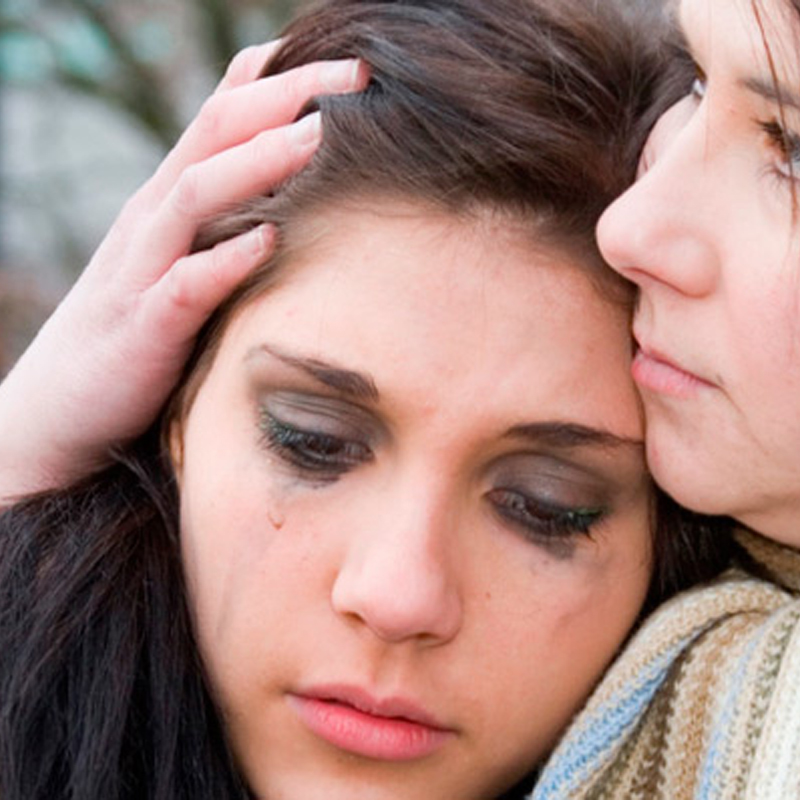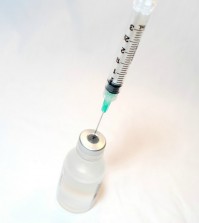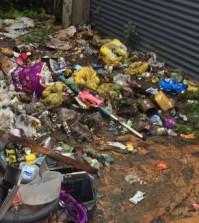- Study Says Most Parents Don’t Use Car Seats In Ride Share Vehicles Like Uber
- This 12-Year-Old Boy Is A Sophomore Aerospace Engineering Major!
- Fire Safety Experts Warn Of Hand Sanitizer Danger After A Mom and Kids Escape House Fire
- Recall Alert: Peaches May Be The Cause Of Salmonella Outbreak, 68 People Ill
- Summer Vacation In The Days Of COVID: Tips To Stay Safe
- How To Safely Grocery Shop During The Coronavirus Pandemic
- Michigan Teen With Vape-Related Illness Undergoes Double Lung Transplant
- Teen Kicks Off Anti-Vaping Campaign From Hospital Bed
- Teenager Receives Life Sentence For Strangling Sister To Death Over A Wi-Fi Password
- Toddler Falls To Death From 11th Deck of Cruise Ship
4 Signs Your Child May Be At Risk Of Drug Addiction


When it came to drugs and alcohol, I didn’t give into peer pressure easily. My anxiety disorder drove a pressing need in me to remain in control at all times. I knew if I got too drunk or too high, I’d have to relinquish that control — and doing so might mean putting myself in danger. My friends, however, did the rebellious teenager thing as if it were going out of style; drinking, smoking, and experimenting with hard drugs.
It took two years of goading from a close friend before I gave in and tried marijuana. I found the drug to have a calming effect on my anxiety, so I continued to use it. Alcohol came next. The horrid taste of the only beer we could afford kept me from ever getting even remotely buzzed, let alone drunk. I’d nurse one can over the course of a night, often failing to finish it. Finally, at the urging of my friends, I tried psychedelics, acid and mushrooms, once each. I didn’t like the high, so I never tried them again.
I never touched hard drugs, such as heroin, cocaine, or meth. The mere thought of them was terrifying. I wasn’t willing to give my body and brain over to extremely addictive substances. And so, I made it through my teenage years intact — that is, without picking up any serious addictions.
Unfortunately, a few of my friends weren’t as lucky.
Over the years, I’ve wondered what differences led to the varied outcomes regarding addiction in our lives. Why did some of us pass through the stages of experimental drug use virtually untouched, while others plummeted headfirst into addiction?
After doing some research, here is what I found:
School Plays a Role
Teenagers who struggle with academics are more likely to use drugs or alcohol, especially if their difficulties began in elementary school. Warning signs include:
- Learning disabilities
- Poor grades
- Truancies
- Low motivation
- Insufficient bonding with classmates and teachers
School transitions are a particularly precarious time for teens. When they move from elementary school to middle school, and again from middle school to high school, they experience new social, emotional, and educational situations and challenges. At the same time, they are exposed to a greater availability of drugs, peers who are using, and social activities involving drugs. It’s a lot to take in and facing all of these challenges at once can increase the risk that they will abuse drugs and alcohol.
Kids Care What Their Friends Think
The desire to try new things and take greater risks is a normal aspect of teenage development, but it leaves adolescents vulnerable to the strong influence of peer pressure. Engaging in unsafe or daring behaviors in order to impress their friends and express their independence is common — and if their peers use drugs, even those without other risk factors may be swayed.
Home Life Is Key
The impact of the home environment is an incredibly important factor in drug use and addiction. Teens who lack a close relationship with their parents and receive little parental supervision have an increased risk of addiction.[3] Other risk factors include:
- Low or unrealistically high parental expectations
- Inconsistent or severe punishment
- High levels of family conflict
Addiction also has a strong genetic component. Teens with a parent, grandparent, sibling, or other blood relative with addiction problems are at greater risk. For example, children of alcoholics are four times more likely than other children to become alcoholics themselves.
Mental Health Issues Are a Game Changer
Teens with mental disorders are at greater risk of drug abuse and addiction than others, twice as likely to be exact. Teens suffering from anxiety, stress-related disorders, and depression often begin abusing drugs in an attempt to lessen feelings of distress. Unfortunately, drug and alcohol use can sometimes make these problems much worse.
Vulnerability to addiction differs from teen to teen, and no single factor can determine whether they will become addicted to drugs. However, generally speaking, the more risk factors a teenager has, the more likely drug use will lead to abuse and addiction. It’s our job as parents, teachers, and community members to prevent the early use of drugs and alcohol in order to reduce these risks. Hopefully, if we can prevent young people from turning to drugs, we can prevent drug addiction entirely.
Sources:
[1] https://www.cdc.gov/healthyyouth/health_and_academics/pdf/alcohol_other_drug.pdf
[3]http://archives.drugabuse.gov/NIDA_Notes/NNVol18N2/Relationships.html
[4] http://pubs.niaaa.nih.gov/publications/arh312/111-118.pdf
[6]https://www.beachesrecovery.com/the-5-most-important-things-to-know-about-addiction-infographic/







Shanon
June 18, 2016 at 11:21 pm
I’m a recovering addict. I had none of the issues you have listed. I didn’t drink or” part” in high school. In my twenties I just decided I wanted to try some drugs and I did. And as they say “it was over”.
If I can give one bit advice, forget all the “here’s what to look for” list. But instead know your friends, children, family members. Don’t take for granted the good life they have. Drugs don’t care who, where, at what your plans are. And if you or loved one is ever confronted with drug addiction, find out how to be part of the solution, the best way to do that, is communicate with the user first, don’t be another obstacle in the road.
Sarah
June 22, 2016 at 1:01 am
I am really glad Sharon made that comment. Yes, I suppose that there are “red flags” to look out for but they really have nothing to do with my story either. You can’t say things like school issues, (truancy, LD, low grades) because being an over achiever, genius/ gifted student, or simply the. Adverage Joe can result in the same thing. And that’s what’s stated in the next paragraph about “home life”: Low expectations or high expectations. If it’s not at one end of the spectrum, than its at the other end.
Like Sharon, I also am a recovering addict and I know from my own experiences, and working a program with amazing members, that we all come from many different walks of life. There is and never will be an actual “cause” that can narrow down a why or rather, a “red flag”.
I suppose this article will be helpful for the type of people that think they know everything to know about kids esp when they’re not even parents yet.
I will give the author credit, because I am sure that some of these indicators are valid. I’m just trying to state that in my opinion, it usually isn’t as easy as reading a safety network article.